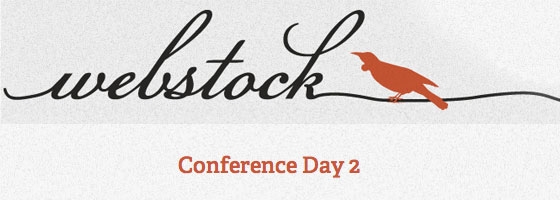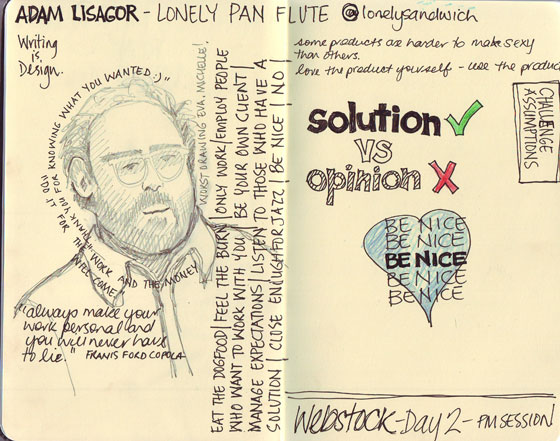"The dirty secret of Content Strategy is that we really spend most of our time wrangling people."
Erin Kissane
Erin Kissane promised a strategy for content in my real world. If you've ever had to deal with getting any content delivered for a project - on or off the web - you will quickly realise it's all about organising the people. To deal with people, one needs tools and, as Erin said, within the content strategy area, we have a vast number of 'deliverables' at our disposal to bring sense and (some) structure to that process.
What I have been loving about the people I've sourced for information around the problem of content wrangling, is how jolly practical they all are. Kristina Halvorson (referred to as the Patron Saint of Content Strategy), Relly Arnett-Baker and Erin Kissane offer really solid steps and advice that actually works (I've proved that to myself by using their advice in real world projects.) Nothing airy fairy about these gals - they've been through the fires of despair and desparation so maybe, just maybe, we don't have to feel lost or alone when trying to do our content wrangling jobs. Jobs, I might say, that we're often making up as we go along.
Finding people who 'get' the web in government and corporates is not always easy. And they're almost never in senior or managerial positions - at least not in my experience. Hells, my last manager used to put Google into Google to find the Google homepage! So when I came to him to say we needed to start wrangling the content for our new website four months before the project started, he brushed me off like one of the many flakes of dandruff on his poorly postured shoulders. He repeated this each time the request was repeated until now the website is three months past go-live and still not ready, with nearly two dozen pages without content and no one to write it. Now he may sound like an extreme case and possibly, he is - but variations on that theme dog the every day web person in your Communications or Web team to the point of subversion and belligerent behaviour.
That was the heart of all our shared problems coming to the workshop. How to juggle expectations with realities. How to get the creation and curation of content onto the map of priorities when those who have the power to drive change, think that this stuff is spat out of a computer by hitting the "content" key? They have, they believe, much bigger fish to fry such as where their department's logo is going to be on the home page.
Product v Process
People think they want deliverables, but what they really need is decisions, and tools. Deliverables can be part of the artifacts of the process, but they shouldn't drive the process."
Erin Kissane
Strategies are not products, they are processes. The really powerful thing about a process, is that the proof is in the pudding - that is, by doing, it is , it works/it doesn't work. Or a part of it might work/not work. Process is about feeling the way and getting to where we're going, making adjustments along the way as the truth of what we're dealing with reveals itself.
It's basically what we've been doing all this time, but with more structure and a few more tools in our arsenal.
Good content is:
- appropriate - right for the user, right for the organisation
- useful - purposeful, specific purpose, measurable
- user-centered - its made with the user's frameworks in mind
- clear - never stop subtracting, bring more clarity, not simplistic
- consistent - serves a usability purpose
- concise - omit needless content
- supported - support plan, no content left behind
Defanging the Elephant
DISCOVERY
- conduct original research - use interviews, surveys
- document and validate - make sure everyone is aligned to the same goals
- speak the same language - be clear of the language, terms and definitions
Collect all documentation, publication, website instance, printed material etc. Pour all the content into your brain to feel the scope and structure of the system of content.
CONTENT INVENTORY
- Who owns the content?
- Where does it live?
- Who cares for it?
Pull up a spreadsheet and document every page. Use a numbering system that ties into the site map/nav systems, so content is uniquely tagged and can be mapped to new content and website. Note any and all major inconsistencies, broken links, other strangeness encountered during the inventory. Remember to share the load: hand out sections of the website to team/s - it's a great idea to get people to audit sections they are not responsible with, thereby having fresh eyes to see the content for what it really is.
FOUNDATION
- focus on decisions not deliverable
- create a core content statement - evaluate feature requests against this core idea
- shop changes to stakeholders/decision makers - especially if there will be major scale or structural changes
FRAMEWORK
- Substance
- what to publish
- how much and how often shall we publish it
- social and community aspects and impact
- Structure
- how is the content structured?
- what are the navigation systems we'll employ?
- where are the cross linkages (online, to print, to other forms of media)?
- Style
- who and what do we sound like?
- when and how will we shift our tone of voice?
- how do we/will we present ourselves?
- Workflow
- who makes the content
- who asks them to make it
- who manages it? who approves it?
- what are the steps in the process?
- what happens to the content after?
Resources
Video: The Big Webshow #4 Content Strategy
Site: Brain Traffic
Book: The Elements of Content Strategy
Book: Content Strategy for the Web
Video: Relly Annett-Baker - Love Thy Geeks






